D-link DGS-3612G, DGS-3627, DGS-3650 BROCHURE
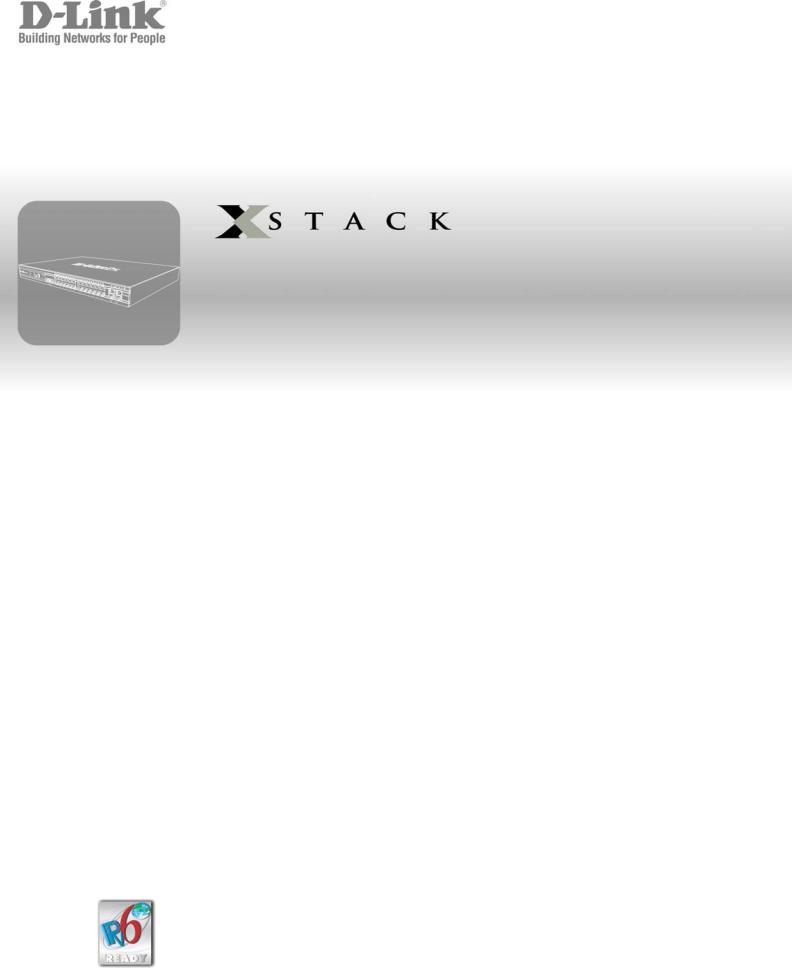
UserManual
ProductModel: 




 DGS-3600Series
DGS-3600Series
Layer3GigabitEthernetManagedSwitch
Release2
©Copyright 2007. All rights reserved.

xStack DGS-3600 Series Layer 3 Gigabit Ethernet Managed Switch
_____________________________________________________________________________
Information in this document is subject to change without notice. © 2007 D-Link Corporation. All rights reserved.
Reproduction in any manner whatsoever without the written permission of D-Link Corporation is strictly forbidden.
Trademarks used in this text: D-Link and the D-LINK logo are trademarks of D-Link Corporation; Microsoft and Windows are registered trademarks of Microsoft Corporation.
Other trademarks and trade names may be used in this document to refer to either the entities claiming the marks and names or their products. D-Link Corporation disclaims any proprietary interest in trademarks and trade names other than its own.
August 2007 P/N 651GS3600025G
ii

xStack DGS-3600 Series Layer 3 Gigabit Ethernet Managed Switch |
|
|
Table of Contents |
Preface .......................................................................................................................................................................................... |
xi |
Intended Readers.......................................................................................................................................................................... |
xii |
Typographical Conventions ......................................................................................................................................................... |
xii |
Notes, Notices, and Cautions ....................................................................................................................................................... |
xii |
Safety Instructions ...................................................................................................................................................................... |
xiii |
Safety Cautions ........................................................................................................................................................................................... |
xiii |
General Precautions for Rack-Mountable Products ..................................................................................................................................... |
xiv |
Protecting Against Electrostatic Discharge ................................................................................................................................................... |
xv |
Introduction...................................................................................................................................................... |
1 |
xStack DGS-3600 Series................................................................................................................................................................ |
1 |
Gigabit Ethernet Technology .......................................................................................................................................................................... |
1 |
Switch Description.......................................................................................................................................................................................... |
1 |
Features........................................................................................................................................................................................................... |
2 |
Ports ................................................................................................................................................................................................................ |
3 |
Front-Panel Components................................................................................................................................................................................. |
2 |
LEDs ............................................................................................................................................................................................................... |
3 |
Rear Panel Description.................................................................................................................................................................................... |
4 |
Side Panel Description .................................................................................................................................................................................... |
5 |
10GE Uplink Modules .................................................................................................................................................................................... |
6 |
Installing the SFP ports ................................................................................................................................................................................... |
7 |
Installation........................................................................................................................................................ |
8 |
Package Contents ............................................................................................................................................................................................ |
8 |
Before You Connect to the Network ............................................................................................................................................................... |
8 |
Installing the Switch without the Rack............................................................................................................................................................ |
9 |
Installing the Switch in a Rack........................................................................................................................................................................ |
9 |
Mounting the Switch in a Standard 19" Rack................................................................................................................................................ |
10 |
RPS Installation............................................................................................................................................................................................. |
11 |
Connecting the Switch ................................................................................................................................... |
13 |
Switch to End Node ...................................................................................................................................................................................... |
13 |
Switch to Hub or Switch ............................................................................................................................................................................... |
14 |
Connecting To Network Backbone or Server................................................................................................................................................ |
15 |
Introduction to Switch Management ........................................................................................................... |
16 |
Management Options ................................................................................................................................................................... |
16 |
Web-based Management Interface................................................................................................................................................................ |
16 |
SNMP-Based Management ........................................................................................................................................................................... |
16 |
Connecting the Console Port (RS-232 DCE) ................................................................................................................................................ |
16 |
First Time Connecting to the Switch............................................................................................................................................................. |
18 |
Password Protection...................................................................................................................................................................................... |
18 |
SNMP Settings.............................................................................................................................................................................................. |
19 |
IP Address Assignment ................................................................................................................................................................................. |
20 |
iii

xStack DGS-3600 Series Layer 3 Gigabit Ethernet Managed Switch
Web-based Switch Configuration................................................................................................................. |
22 |
Introduction.................................................................................................................................................................................. |
22 |
Login to Web Manager ................................................................................................................................................................................. |
22 |
Web-based User Interface ............................................................................................................................................................................. |
23 |
Web Pages..................................................................................................................................................................................................... |
24 |
Administration ............................................................................................................................................... |
25 |
Device Information ...................................................................................................................................................................... |
26 |
Stacking ....................................................................................................................................................................................... |
29 |
Port Configuration........................................................................................................................................................................ |
33 |
Port Settings .................................................................................................................................................................................................. |
33 |
Port Error Disabled ...................................................................................................................................................................... |
35 |
Port Description ............................................................................................................................................................................................ |
36 |
User Accounts.............................................................................................................................................................................. |
37 |
Port Mirroring .............................................................................................................................................................................. |
38 |
System Log Settings..................................................................................................................................................................... |
39 |
System Log Save Mode Settings................................................................................................................................................................... |
40 |
System Severity Settings.............................................................................................................................................................. |
41 |
SNTP Settings.............................................................................................................................................................................. |
42 |
Time Settings ................................................................................................................................................................................................ |
42 |
Time Zone and DST...................................................................................................................................................................................... |
43 |
MAC Notification Settings .......................................................................................................................................................... |
45 |
TFTP Services.............................................................................................................................................................................. |
46 |
File System Services .................................................................................................................................................................... |
47 |
System Boot Information .............................................................................................................................................................................. |
47 |
FS Information .............................................................................................................................................................................................. |
47 |
Directory ....................................................................................................................................................................................................... |
48 |
Rename ......................................................................................................................................................................................................... |
48 |
Copy.............................................................................................................................................................................................................. |
49 |
Ping Test ...................................................................................................................................................................................... |
49 |
IPv4 Ping Test............................................................................................................................................................................................... |
49 |
IPv6 Ping Test............................................................................................................................................................................................... |
50 |
IPv6 Neighbor.............................................................................................................................................................................. |
51 |
IPv6 Neighbor Settings ................................................................................................................................................................................. |
51 |
DHCP Auto Configuration Settings............................................................................................................................................. |
52 |
SNMP Manager ........................................................................................................................................................................... |
53 |
SNMP Settings.............................................................................................................................................................................................. |
53 |
SNMP Traps Settings.................................................................................................................................................................................... |
54 |
SNMP User Table ......................................................................................................................................................................................... |
54 |
SNMP View Table ........................................................................................................................................................................................ |
56 |
SNMP Group Table....................................................................................................................................................................................... |
57 |
SNMP Community Table Configuration....................................................................................................................................................... |
58 |
SNMP Host Table ......................................................................................................................................................................................... |
59 |
SNMP Engine ID .......................................................................................................................................................................................... |
60 |
iv

xStack DGS-3600 Series Layer 3 Gigabit Ethernet Managed Switch
IP-MAC-Port Binding.................................................................................................................................................................. |
61 |
ACL Mode .................................................................................................................................................................................................... |
61 |
IP-MAC Binding Port ................................................................................................................................................................................... |
63 |
IP-MAC Binding Table................................................................................................................................................................................. |
64 |
IP-MAC Binding Blocked............................................................................................................................................................................. |
65 |
sFlow............................................................................................................................................................................................ |
66 |
sFlow Global Settings ................................................................................................................................................................................... |
66 |
sFlow Analyzer Settings................................................................................................................................................................................ |
67 |
sFlow Sampler Settings................................................................................................................................................................................. |
69 |
sFlow Counter Poller Settings....................................................................................................................................................................... |
71 |
D-Link Single IP Management .................................................................................................................................................... |
73 |
Single IP Management (SIM) Overview....................................................................................................................................................... |
73 |
SIM Using the Web Interface........................................................................................................................................................................ |
74 |
Topology....................................................................................................................................................................................................... |
76 |
Tool Tips....................................................................................................................................................................................................... |
78 |
Right-Click.................................................................................................................................................................................................... |
79 |
Menu Bar ...................................................................................................................................................................................................... |
81 |
Firmware Upgrade ........................................................................................................................................................................................ |
82 |
Configuration File Backup/Restore............................................................................................................................................................... |
82 |
Upload Log File ............................................................................................................................................................................................ |
83 |
Layer 2 Features ............................................................................................................................................ |
84 |
VLANs......................................................................................................................................................................................... |
84 |
Understanding IEEE 802.1p Priority............................................................................................................................................................. |
84 |
VLAN Description........................................................................................................................................................................................ |
84 |
IEEE 802.1Q VLANs.................................................................................................................................................................................... |
85 |
Static VLAN Entry........................................................................................................................................................................................ |
89 |
GVRP Setting................................................................................................................................................................................................ |
91 |
Double VLANs ............................................................................................................................................................................................. |
92 |
Protocol VLANs ........................................................................................................................................................................................... |
96 |
Protocol Group VLAN Settings .................................................................................................................................................................... |
97 |
Protocol VLAN Port Settings........................................................................................................................................................................ |
98 |
Trunking....................................................................................................................................................................................... |
99 |
Link Aggregation ........................................................................................................................................................................................ |
100 |
LACP Port Settings..................................................................................................................................................................................... |
102 |
IGMP Snooping ......................................................................................................................................................................... |
103 |
IGMP Snooping .......................................................................................................................................................................................... |
103 |
Router Port Settings .................................................................................................................................................................................... |
105 |
ISM VLAN Settings................................................................................................................................................................... |
106 |
Limited IP Multicast Range ....................................................................................................................................................... |
110 |
MLD Snooping .......................................................................................................................................................................... |
111 |
MLD Control Messages .............................................................................................................................................................................. |
111 |
MLD Snooping Settings.............................................................................................................................................................................. |
111 |
MLD Router Port Settings........................................................................................................................................................................... |
113 |
Spanning Tree ............................................................................................................................................................................ |
115 |
v

xStack DGS-3600 Series Layer 3 Gigabit Ethernet Managed Switch
STP Bridge Global Settings ........................................................................................................................................................................ |
118 |
MST Configuration Identification............................................................................................................................................................... |
120 |
MSTP Port Information............................................................................................................................................................................... |
122 |
STP Instance Settings.................................................................................................................................................................................. |
123 |
STP Port Settings ........................................................................................................................................................................................ |
124 |
Forwarding................................................................................................................................................................................. |
126 |
Unicast Forwarding..................................................................................................................................................................................... |
126 |
Multicast Forwarding .................................................................................................................................................................................. |
126 |
Multicast Filtering Mode............................................................................................................................................................................. |
127 |
Layer 3 Features .......................................................................................................................................... |
129 |
IPv6............................................................................................................................................................................................ |
130 |
Overview..................................................................................................................................................................................................... |
130 |
Packet Format ............................................................................................................................................................................................. |
131 |
Address Format ........................................................................................................................................................................................... |
132 |
ICMPv6....................................................................................................................................................................................................... |
134 |
Neighbor Discovery .................................................................................................................................................................................... |
134 |
IP Multinetting ........................................................................................................................................................................... |
135 |
Interface Settings ....................................................................................................................................................................... |
136 |
MD5 Key Settings...................................................................................................................................................................... |
140 |
Route Redistribution Settings .................................................................................................................................................... |
141 |
Routing Table............................................................................................................................................................................. |
142 |
IPv4 Static/Default Route Settings.............................................................................................................................................................. |
142 |
IPv6 Static/Default Route Settings.............................................................................................................................................................. |
143 |
Route Preference Settings .......................................................................................................................................................... |
145 |
Static ARP Settings.................................................................................................................................................................... |
147 |
Policy Route Settings................................................................................................................................................................. |
148 |
RIP ............................................................................................................................................................................................. |
150 |
RIP Global Settings..................................................................................................................................................................................... |
151 |
RIP Interface Settings ................................................................................................................................................................................. |
152 |
OSPF.......................................................................................................................................................................................... |
153 |
Including the NSSA .................................................................................................................................................................................... |
168 |
OSPF Global Settings ................................................................................................................................................................................. |
170 |
OSPF Area Setting ...................................................................................................................................................................................... |
170 |
OSPF Interface Settings .............................................................................................................................................................................. |
172 |
OSPF Virtual Link Settings......................................................................................................................................................................... |
174 |
OSPF Area Aggregation Settings................................................................................................................................................................ |
175 |
OSPF Host Route Settings .......................................................................................................................................................................... |
176 |
DHCP/BOOTP Relay ................................................................................................................................................................ |
178 |
DHCP / BOOTP Relay Global Settings ...................................................................................................................................................... |
178 |
DHCP/BOOTP Relay Interface Settings..................................................................................................................................................... |
180 |
DHCP Server ............................................................................................................................................................................. |
181 |
DHCP Server Global Settings ..................................................................................................................................................................... |
181 |
DHCP Server Exclude Address Settings..................................................................................................................................................... |
182 |
Create DHCP Pool ...................................................................................................................................................................................... |
182 |
vi

xStack DGS-3600 Series Layer 3 Gigabit Ethernet Managed Switch
DHCP Server Dynamic Binding ................................................................................................................................................................. |
185 |
DHCP Server Manual Binding.................................................................................................................................................................... |
185 |
DNS Relay ................................................................................................................................................................................. |
187 |
DNS Relay Global Settings......................................................................................................................................................................... |
187 |
DNS Relay Static Settings........................................................................................................................................................................... |
188 |
VRRP ......................................................................................................................................................................................... |
189 |
VRRP Global Settings................................................................................................................................................................................. |
189 |
VRRP Virtual Router Settings .................................................................................................................................................................... |
189 |
VRRP Authentication Settings.................................................................................................................................................................... |
193 |
IP Multicast Routing Protocol.................................................................................................................................................... |
194 |
IGMP Interface Settings.............................................................................................................................................................................. |
196 |
DVMRP Interface Configuration............................................................................................................................................... |
198 |
DVMRP Global Settings............................................................................................................................................................................. |
198 |
DVMRP Interface Settings.......................................................................................................................................................................... |
198 |
PIM Protocol.............................................................................................................................................................................. |
200 |
PIM Global Settings.................................................................................................................................................................................... |
201 |
PIM Parameter Settings............................................................................................................................................................................... |
201 |
PIM Interface Settings................................................................................................................................................................................. |
202 |
PIM Candidate BSR Settings ...................................................................................................................................................................... |
203 |
PIM Candidate RP Settings......................................................................................................................................................................... |
204 |
PIM Static RP Settings................................................................................................................................................................................ |
205 |
PIM Register Checksum Settings................................................................................................................................................................ |
206 |
QoS ................................................................................................................................................................ |
207 |
Advantages of QoS ..................................................................................................................................................................................... |
207 |
Understanding QoS ..................................................................................................................................................................................... |
208 |
Port Bandwidth .......................................................................................................................................................................... |
209 |
QoS Scheduling Mechanism...................................................................................................................................................... |
209 |
QoS Output Scheduling ............................................................................................................................................................. |
210 |
Configuring the Combination Queue .......................................................................................................................................................... |
210 |
802.1p Default Priority .............................................................................................................................................................. |
212 |
802.1p User Priority................................................................................................................................................................... |
212 |
ACL ............................................................................................................................................................... |
213 |
Time Range................................................................................................................................................................................ |
213 |
Access Profile Table .................................................................................................................................................................. |
214 |
ACL Flow Meter........................................................................................................................................................................ |
230 |
CPU Interface Filtering.............................................................................................................................................................. |
233 |
CPU Interface Filtering State Settings ........................................................................................................................................................ |
233 |
CPU Interface Filtering Profile Table ......................................................................................................................................................... |
233 |
Security ......................................................................................................................................................... |
246 |
Traffic Control ........................................................................................................................................................................... |
246 |
Port Security............................................................................................................................................................................... |
249 |
Port Security Entries .................................................................................................................................................................. |
250 |
Port Access Entity (802.1X) ...................................................................................................................................................... |
251 |
vii

xStack DGS-3600 Series Layer 3 Gigabit Ethernet Managed Switch
802.1X Port-Based and MAC-Based Access Control ................................................................................................................................. |
251 |
Understanding 802.1X Port-based and MAC-based Network Access Control ........................................................................................... |
254 |
Port-Based Network Access Control........................................................................................................................................................... |
254 |
MAC-Based Network Access Control ........................................................................................................................................................ |
255 |
Guest VLANs.............................................................................................................................................................................................. |
256 |
Guest VLAN ............................................................................................................................................................................................... |
257 |
Configure 802.1X Authenticator Parameter................................................................................................................................................ |
258 |
802.1X User ................................................................................................................................................................................................ |
260 |
Initializing Ports for Port Based 802.1X ..................................................................................................................................................... |
260 |
Initializing Ports for MAC Based 802.1X................................................................................................................................................... |
261 |
Reauthenticate Port(s) for Port Based 802.1X............................................................................................................................................. |
262 |
Reauthenticate Port(s) for MAC-based 802.1X........................................................................................................................................... |
263 |
Authentic RADIUS Server.......................................................................................................................................................................... |
263 |
Web Authentication Configuration ............................................................................................................................................ |
264 |
Conditions and Limitations ......................................................................................................................................................................... |
264 |
Trust Host................................................................................................................................................................................... |
268 |
Access Authentication Control .................................................................................................................................................. |
269 |
Authentication Policy and Parameter Settings ............................................................................................................................................ |
270 |
Application Authentication Settings............................................................................................................................................................ |
270 |
Authentication Server Group ...................................................................................................................................................................... |
271 |
Authentication Server Host ......................................................................................................................................................................... |
272 |
Login Method Lists..................................................................................................................................................................................... |
274 |
Enable Method Lists ................................................................................................................................................................................... |
275 |
Configure Local Enable Password .............................................................................................................................................................. |
277 |
Enable Admin ............................................................................................................................................................................................. |
277 |
Safeguard Engine ....................................................................................................................................................................... |
278 |
Safeguard Engine Settings ......................................................................................................................................................... |
279 |
Traffic Segmentation.................................................................................................................................................................. |
280 |
Secure Socket Layer (SSL) ........................................................................................................................................................ |
281 |
Download Certificate .................................................................................................................................................................................. |
281 |
Ciphersuite .................................................................................................................................................................................................. |
281 |
SSH ............................................................................................................................................................................................ |
284 |
SSH Server Configuration........................................................................................................................................................................... |
284 |
SSH Authentication Mode and Algorithm Settings..................................................................................................................................... |
285 |
SSH User Authentication ............................................................................................................................................................................ |
287 |
Monitoring.................................................................................................................................................... |
288 |
Device Status ............................................................................................................................................................................. |
288 |
Stacking Information.................................................................................................................................................................. |
289 |
Module Information ................................................................................................................................................................... |
290 |
CPU Utilization.......................................................................................................................................................................... |
291 |
Port Utilization........................................................................................................................................................................... |
292 |
Packets ....................................................................................................................................................................................... |
293 |
Received (RX)............................................................................................................................................................................................. |
293 |
UMB Cast (RX) .......................................................................................................................................................................................... |
295 |
viii

xStack DGS-3600 Series Layer 3 Gigabit Ethernet Managed Switch
Transmitted (TX) ........................................................................................................................................................................................ |
297 |
Errors ......................................................................................................................................................................................... |
299 |
Received (RX)............................................................................................................................................................................................. |
299 |
Transmitted (TX) ........................................................................................................................................................................................ |
301 |
Packet Size................................................................................................................................................................................. |
303 |
Browse Router Port.................................................................................................................................................................... |
305 |
Browse MLD Router Port .......................................................................................................................................................... |
305 |
VLAN Status.............................................................................................................................................................................. |
305 |
Port Access Control ................................................................................................................................................................... |
306 |
Authenticator State...................................................................................................................................................................................... |
306 |
Authenticator Statistics ............................................................................................................................................................................... |
308 |
Authenticator Session Statistics .................................................................................................................................................................. |
309 |
Authenticator Diagnostics........................................................................................................................................................................... |
310 |
RADIUS Authentication ............................................................................................................................................................................. |
312 |
RADIUS Accounting .................................................................................................................................................................................. |
313 |
MAC Address Table .................................................................................................................................................................. |
315 |
IGMP Snooping Group .............................................................................................................................................................. |
316 |
MLD Snooping Group ................................................................................................................................................................................ |
317 |
Trace Route................................................................................................................................................................................ |
318 |
IGMP Snooping Forwarding...................................................................................................................................................... |
319 |
MLD Snooping Forwarding....................................................................................................................................................... |
320 |
IP Forwarding Table .................................................................................................................................................................. |
321 |
Browse Routing Table ............................................................................................................................................................... |
322 |
Browse IP Multicast Forwarding Table ..................................................................................................................................... |
322 |
Browse IP Multicast Interface Table.......................................................................................................................................... |
322 |
Browse IGMP Group Table ....................................................................................................................................................... |
323 |
DVMRP Monitoring .................................................................................................................................................................. |
323 |
Browse DVMRP Routing Table.................................................................................................................................................................. |
323 |
Browse DVMRP Neighbor Table ............................................................................................................................................................... |
323 |
Browse DVMRP Routing Next Hop Table ................................................................................................................................................. |
323 |
PIM Monitoring ......................................................................................................................................................................... |
324 |
Browse PIM Neighbor Table ...................................................................................................................................................................... |
324 |
Browse PIM IP Multicast Route Table ....................................................................................................................................................... |
324 |
Browse PIM RP Set Table .......................................................................................................................................................................... |
324 |
OSPF Monitoring....................................................................................................................................................................... |
325 |
Browse OSPF LSDB Table......................................................................................................................................................................... |
325 |
Browse OSPF Neighbor Table.................................................................................................................................................................... |
326 |
Browse OSPF Virtual Neighbor Table........................................................................................................................................................ |
326 |
Switch Logs ............................................................................................................................................................................... |
327 |
Browse ARP Table...................................................................................................................................................................................... |
328 |
Session Table .............................................................................................................................................................................................. |
328 |
Switch Maintenance..................................................................................................................................... |
329 |
Reset........................................................................................................................................................................................... |
329 |
ix

xStack DGS-3600 Series Layer 3 Gigabit Ethernet Managed Switch
Reboot System ........................................................................................................................................................................... |
329 |
Save Services ............................................................................................................................................................................. |
330 |
Save Changes .............................................................................................................................................................................................. |
330 |
Current Configuration Settings ................................................................................................................................................................... |
331 |
Logout........................................................................................................................................................................................ |
331 |
Technical Specifications .............................................................................................................................. |
332 |
Cables and Connectors................................................................................................................................ |
334 |
System Log Entries ...................................................................................................................................... |
335 |
Cable Lengths............................................................................................................................................... |
347 |
Glossary ........................................................................................................................................................ |
348 |
Warranties/Registration.............................................................................................................................. |
351 |
Tech Support............................................................................................................................................................................................... |
358 |
x

xStack DGS-3600 Series Layer 3 Gigabit Ethernet Managed Switch
Preface
The xStack DGS-3600 Series User Manual is divided into sections that describe the system installation and operating instructions with examples.
Section 1, Introduction - Describes the Switch and its features.
Section 2, Installation - Helps you get started with the basic installation of the Switch and also describes the front panel, rear panel, side panels, and LED indicators of the Switch.
Section 3, Connecting the Switch - Tells how you can connect the Switch to your Ethernet/Fast Ethernet network.
Section 4, Introduction to Switch Management - Introduces basic Switch management features, including password protection, SNMP settings, IP address assignment and connecting devices to the Switch.
Section 5, Introduction to Web-based Switch Management - Talks about connecting to and using the Web-based switch management feature on the Switch.
Section 6, Administration - A detailed discussion about configuring the basic functions of the Switch, including Device Information, Stacking, Port Configuration, User Accounts, Port Mirroring, System Log, System Severity Settings, SNTP Settings, MAC Notification Settings, TFTP Services, File System Services, Ping Test, IPv6 Neighbor, DHCP Auto Configuration, SNMP Manager, IP-MAC-Port Binding, sFlow, and Single IP Management Settings.
Section 7, Layer 2 Features - A discussion of Layer 2 features of the Switch, including VLAN, Trunking, IGMP Snooping, MLD Snooping, Spanning Tree, and Forwarding & Filtering.
Section 8, Layer 3 Features - A discussion of Layer 3 features of the Switch, including Interface Settings, MD5 Key Settings, Route Redistribution Settings, Static/Default Route Settings, Route Preference Settings, Static ARP Settings, Policy Route Settings, RIP, OSPF, DCHP/BOOTP Relay, DNS Relay, VRRP, and IP Multicast Routing Protocol.
Section 9, QoS - Features information on QoS, including Bandwidth Control, QoS Scheduling Mechanism, QoS Output Scheduling, 802.1p Default Priority, and 802.1p User Priority.
Section 10, ACL - Discussion on the ACL function of the Switch, including Time Range, Access Profile Table, ACL Flow Meter, and CPU Interface Filtering.
Section 11, Security – A discussion on the Security functions on the Switch, including Traffic Control, Port Security, 802.1X, Trust Host, Web Authentication, Trust Host, Access Authentication Control, Safeguard Engine, Traffic Segmentation, SSL, and SSH.
Section 12, Monitoring – Features information on Monitoring including Device Status, Module Information, CPU Utilization, Port Utilization, Packets, Errors, Packet Size, Browse Router Port, Browse MLD Router Port, VLAN Status, Port Access Control, MAC Address Table, IGMP Snooping Group, MLD Snooping Group, Trace Route, IGMP Snooping Forwarding, MLD Snooping Forwarding, IP Forwarding Table, Browse Routing Table, Browse IP Multicast Forwarding Table, Browse IP Multicast Interface Table, Browse IGMP Group Table, DVMRP Monitor, PIM Monitor, OSPF Monitor, Switch Logs, Browse ARP Table and Session Table.
Appendix A, Technical Specifications - Technical specifications for the DSG-3612, DGS-3627, DGS-3627G and the DGS-3650.
Appendix B, Cables and Connectors - Describes the RJ-45 receptacle/connector, straight through and crossover cables and standard pin assignments.
Appendix C, Cable Lengths - Information on cable types and maximum distances. Glossary - Lists definitions for terms and acronyms used in this document.
xi

xStack DGS-3600 Series Layer 3 Gigabit Ethernet Managed Switch
Intended Readers
The xStack DGS-3600 Series User Manual contains information for setup and management of the Switch. The term, “the Switch” will be used when referring to all three switches. This manual is intended for network managers familiar with network management concepts and terminology.
Typographical Conventions
Convention |
Description |
|
|
|
|
[ ] |
In a command line, square brackets indicate an optional entry. For example: [copy filename] |
|
|
means that optionally you can type copy followed by the name of the file. Do not type the |
|
|
brackets. |
|
|
|
|
Bold font |
Indicates a button, a toolbar icon, menu, or menu item. For example: Open the File menu |
|
|
and choose Cancel. Used for emphasis. May also indicate system messages or prompts |
|
|
appearing on your screen. For example: You have mail. Bold font is also used to represent |
|
|
filenames, program names and commands. For example: use the copy command. |
|
|
|
|
Boldface |
Indicates commands and responses to prompts that must be typed exactly as printed in the |
|
Typewriter Font |
manual. |
|
|
|
|
Initial capital letter |
Indicates a window name. Names of keys on the keyboard have initial capitals. For example: |
|
|
Click Enter. |
|
|
|
|
Italics |
Indicates a window name or a field. Also can indicate a variables or parameter that is |
|
|
replaced with an appropriate word or string. For example: type filename means that you |
|
|
should type the actual filename instead of the word shown in italic. |
|
|
|
|
Menu Name > Menu |
Menu Name > Menu Option Indicates the menu structure. Device > Port > Port |
|
Option |
Properties means the Port Properties menu option under the Port menu option that is |
|
|
located under the Device menu. |
|
|
|
|
Notes, Notices, and Cautions
A NOTE indicates important information that helps you make better use of your device.
A NOTICE indicates either potential damage to hardware or loss of data and tells you how to avoid the problem.
A CAUTION indicates a potential for property damage, personal injury, or death.
xii

xStack DGS-3600 Series Layer 3 Gigabit Ethernet Managed Switch
Safety Instructions
Use the following safety guidelines to ensure your own personal safety and to help protect your system from potential damage. Throughout this document, the caution icon (  ) is used to indicate cautions and precautions that you need to review and follow.
) is used to indicate cautions and precautions that you need to review and follow.
Safety Cautions
To reduce the risk of bodily injury, electrical shock, fire, and damage to the equipment, observe the following precautions.
•Observe and follow service markings.
•Do not service any product except as explained in your system documentation.
•Opening or removing covers that are marked with the triangular symbol with a lightning bolt may expose you to electrical shock.
•Only a trained service technician should service components inside these compartments.
•If any of the following conditions occur, unplug the product from the electrical outlet and replace the part or contact your trained service provider:
•The power cable, extension cable, or plug is damaged.
•An object has fallen into the product.
•The product has been exposed to water.
•The product has been dropped or damaged.
•The product does not operate correctly when you follow the operating instructions.
•Keep your system away from radiators and heat sources. Also, do not block cooling vents.
•Do not spill food or liquids on your system components, and never operate the product in a wet environment. If the system gets wet, see the appropriate section in your troubleshooting guide or contact your trained service provider.
•Do not push any objects into the openings of your system. Doing so can cause fire or electric shock by shorting out interior components.
•Use the product only with approved equipment.
•Allow the product to cool before removing covers or touching internal components.
•Operate the product only from the type of external power source indicated on the electrical ratings label. If you are not sure of the type of power source required, consult your service provider or local power company.
•To help avoid damaging your system, be sure the voltage on the power supply is set to match the power available at your location:
•115 volts (V)/60 hertz (Hz) in most of North and South America and some Far Eastern countries such as South Korea and Taiwan
•100 V/50 Hz in eastern Japan and 100 V/60 Hz in western Japan
•230 V/50 Hz in most of Europe, the Middle East, and the Far East
•Also, be sure that attached devices are electrically rated to operate with the power available in your location.
•Use only approved power cable(s). If you have not been provided with a power cable for your system or for any ACpowered option intended for your system, purchase a power cable that is approved for use in your country. The power cable must be rated for the product and for the voltage and current marked on the product's electrical ratings label. The voltage and current rating of the cable should be greater than the ratings marked on the product.
•To help prevent electric shock, plug the system and peripheral power cables into properly grounded electrical outlets. These cables are equipped with three-prong plugs to help ensure proper grounding. Do not use adapter plugs or remove the grounding prong from a cable. If you must use an extension cable, use a 3-wire cable with properly grounded plugs.
•Observe extension cable and power strip ratings. Make sure that the total ampere rating of all products plugged into the extension cable or power strip does not exceed 80 percent of the ampere ratings limit for the extension cable or power strip.
xiii
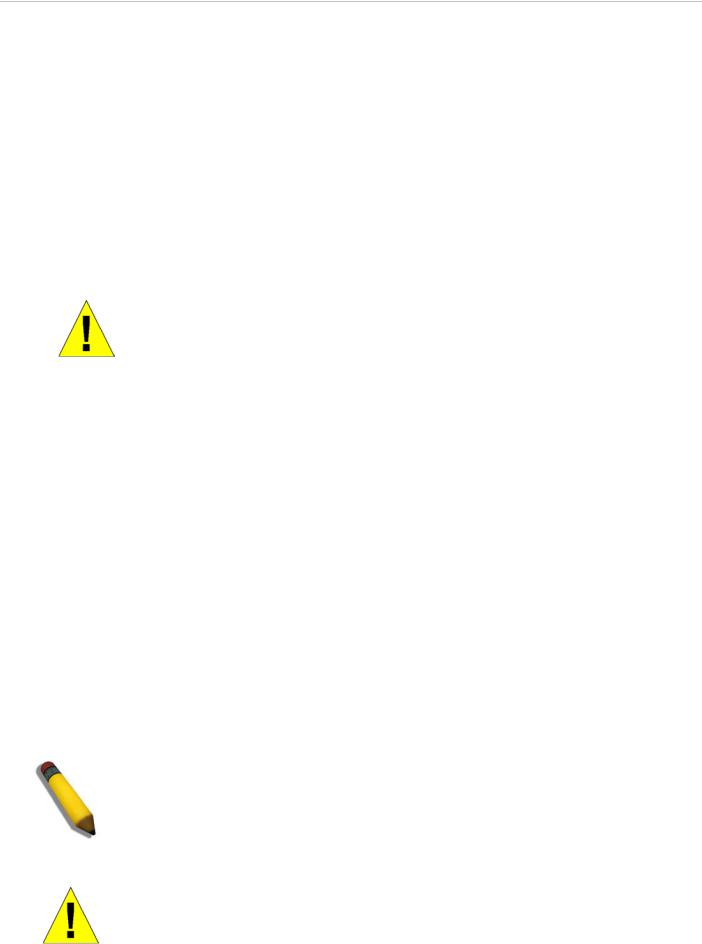
xStack DGS-3600 Series Layer 3 Gigabit Ethernet Managed Switch
•To help protect your system from sudden, transient increases and decreases in electrical power, use a surge suppressor, line conditioner, or uninterruptible power supply (UPS).
•Position system cables and power cables carefully; route cables so that they cannot be stepped on or tripped over. Be sure that nothing rests on any cables.
•Do not modify power cables or plugs. Consult a licensed electrician or your power company for site modifications. Always follow your local/national wiring rules.
•When connecting or disconnecting power to hot-pluggable power supplies, if offered with your system, observe the following guidelines:
•Install the power supply before connecting the power cable to the power supply.
•Unplug the power cable before removing the power supply.
•If the system has multiple sources of power, disconnect power from the system by unplugging all power cables from the power supplies.
•Move products with care; ensure that all casters and/or stabilizers are firmly connected to the system. Avoid sudden stops and uneven surfaces.
General Precautions for Rack-Mountable Products
Observe the following precautions for rack stability and safety. Also, refer to the rack installation documentation accompanying the system and the rack for specific caution statements and procedures.
•Systems are considered to be components in a rack. Thus, "component" refers to any system as well as to various peripherals or supporting hardware.
•Before working on the rack, make sure that the stabilizers are secured to the rack, extended to the floor, and that the full weight of the rack rests on the floor. Install front and side stabilizers on a single rack or front stabilizers for joined multiple racks before working on the rack.
•Always load the rack from the bottom up, and load the heaviest item in the rack first.
•Make sure that the rack is level and stable before extending a component from the rack.
•Use caution when pressing the component rail release latches and sliding a component into or out of a rack; the slide rails can pinch your fingers.
•After a component is inserted into the rack, carefully extend the rail into a locking position, and then slide the component into the rack.
•Do not overload the AC supply branch circuit that provides power to the rack. The total rack load should not exceed 80 percent of the branch circuit rating.
•Ensure that proper airflow is provided to components in the rack.
•Do not step on or stand on any component when servicing other components in a rack.
NOTE: A qualified electrician must perform all connections to DC power and to safety grounds. All electrical wiring must comply with applicable local, regional or national codes and practices.
CAUTION: Never defeat the ground conductor or operate the equipment in the absence of a suitably installed ground conductor. Contact the appropriate electrical inspection authority or an electrician if you are uncertain that suitable grounding is available.
xiv

xStack DGS-3600 Series Layer 3 Gigabit Ethernet Managed Switch
CAUTION: The system chassis must be positively grounded to the rack cabinet frame. Do not attempt to connect power to the system until grounding cables are connected. A qualified electrical inspector must inspect completed power and safety ground wiring. An energy hazard will exist if the safety ground cable is omitted or disconnected.
CAUTION: Do not replace the battery with an incorrect type. The risk of explosion exists if the replacement battery is not the correct lithium battery type. Dispose of used batteries according to the instructions.
Protecting Against Electrostatic Discharge
Static electricity can harm delicate components inside your system. To prevent static damage, discharge static electricity from your body before you touch any of the electronic components, such as the microprocessor. You can do so by periodically touching an unpainted metal surface on the chassis.
You can also take the following steps to prevent damage from electrostatic discharge (ESD):
1.When unpacking a static-sensitive component from its shipping carton, do not remove the component from the antistatic packing material until you are ready to install the component in your system. Just before unwrapping the antistatic packaging, be sure to discharge static electricity from your body.
2.When transporting a sensitive component, first place it in an antistatic container or packaging.
3.Handle all sensitive components in a static-safe area. If possible, use antistatic floor pads, workbench pads and an antistatic grounding strap.
xv

xStack DGS-3600 Series Layer 3 Stackable Fast Ethernet Managed Switch
Section 1
Introduction
xStack DGS-3600 Series
Gigabit Ethernet Technology
Switch Description
Features
Ports
Front-Panel Components
Side Panel Description
Rear Panel Description
xStack DGS-3600 Series
The DGS-3600 switch series is a member of the D-Link xStack switch family. xStack is a complete family of stackable devices that ranges from edge 10/100Mbps switches to core Gigabit switches. xStack provides unsurpassed performance, fault tolerance, scalable flexibility, robust security, standard-based interoperability and an impressive support for 10 Gigabit technology to futureproof departmental and enterprise network deployments with an easy migration path.
The following manual describes the installation, maintenance and configurations concerning members of the D-Link DGS-3600 switch series, including the DGS-3612G, DGS-3627, DGS-3627G, and the DGS-3650. These four switches are identical in configurations and very similar in basic hardware and consequentially, most of the information in this manual will be universal to the total group of Switches. Corresponding screen pictures of the web manager may be taken from any one of these switches but the configuration will be identical, except for varying port counts. For the remainder of this document, we will refer to the DGS3600 as the switch in question for examples, configurations and explanations.
Gigabit Ethernet Technology
Gigabit Ethernet is an extension of IEEE 802.3 Ethernet utilizing the same packet structure, format, and support for CSMA/CD protocol, full duplex, flow control, and management objects, but with a tenfold increase in theoretical throughput over 100Mbps Fast Ethernet and a one hundred-fold increase over 10Mbps Ethernet. Since it is compatible with all 10Mbps and 100Mbps Ethernet environments, Gigabit Ethernet provides a straightforward upgrade without wasting a company's existing investment in hardware, software, and trained personnel.
The increased speed and extra bandwidth offered by Gigabit Ethernet are essential to coping with the network bottlenecks that frequently develop as computers and their busses get faster and more users using applications that generate more traffic. Upgrading key components, such as your backbone and servers to Gigabit Ethernet can greatly improve network response times as well as significantly speed up the traffic between your sub networks.
Gigabit Ethernet enables fast optical fiber connections to support video conferencing, complex imaging, and similar data-intensive applications. Likewise, since data transfers occur 10 times faster than Fast Ethernet, servers outfitted with Gigabit Ethernet NIC's are able to perform 10 times the number of operations in the same amount of time.
In addition, the phenomenal bandwidth delivered by Gigabit Ethernet is the most cost-effective method to take advantage of today and tomorrow's rapidly improving switching and routing internetworking technologies.
Switch Description
The Switch is equipped with unshielded twisted-pair (UTP) cable ports providing dedicated 10, 100 or 1000 Mbps bandwidth. The DGS-3627 is equipped with twenty-four 10/100/1000BASE-T ports, and the DGS-3650 has forty-eight 10/100/1000BASE-T ports, all of which are Auto MDI-X/MDI-II convertible ports that can be used for uplinking to another switch. The DGS-3612GG is equipped with twelve 100/1000Mbps SFP (Small Form Factor Portable) ports, in addition to four 1000BASE-T located on the front panel. These ports can be used for connecting PCs, printers, servers, hubs, routers, switches and other networking devices. The dual speed ports use standard twisted-pair cabling and are ideal for segmenting networks into small, connected sub networks for superior performance. Each 10/100/1000 port can support up to 2000 Mbps of throughput in full-duplex mode. In addition, the Switch has four 1000Mbps SFP combo ports located on the front panel. These gigabit combo ports are ideal for connecting to a server or network backbone.
1

xStack DGS-3600 Series Layer 3 Stackable Fast Ethernet Managed Switch
The DGS-3627G contains twenty-four 1000Mbps SFP (Small Form Factor Portable) ports, in addition to four 1000BASE-T located on the front panel. The SFP combo ports are to be used with fiber-optical transceiver cabling in order to uplink various other networking devices for a gigabit link that may span great distances. The SFP ports can also support full-duplex transmissions, have auto-negotiation and can be used with DEM-310GT (1000BASE-LX), DEM-311GT (1000BASE-SX), DEM312GT2 (1000BASE-SX), DEM-314GT (1000BASE-LH), DEM-315GT (1000BASE-ZX), DEM-330T/R (WDM Transceiver) and the DEM-331T/R (WDM Transceiver) transceivers. These ports are referred to as “combo” ports which means that both the SFP ports and the 1000BASE-T ports are numbered the same and cannot be used simultaneously. Attempting to use the ports simultaneously will cause a link down status for the 1000BASE-T ports. SFP ports will always have priority over these 1000BASE-T ports.
Each switch also contains open slots in the rear of the Switch, which are used to add optional single-port 10GE modules. Two available slots reside within the DGS-3650, while the DGS-3627 and DGS-3627G both contain three slots. These modules, the DEM-410CX CX4 and the DEM-410X XFP, are IEEE 802.3ae and IEEE 802.3ak compliant and support full-duplex mode only. More information will be provided on these modules later in this manual.
This Switch enables the network to use some of the most demanding multimedia and imaging applications concurrently with other user applications without creating bottlenecks. The built-in console interface can be used to configure the Switch's settings for priority queuing, VLANs, and port trunk groups, port monitoring, and port speed.
Features
•IEEE 802.3ad Link Aggregation Control Protocol support.
•IEEE 802.1X Port-based and MAC-based Access Control
•IEEE 802.1Q VLAN
•IEEE 802.1D Spanning Tree, IEEE 802.1W Rapid Spanning Tree and IEEE 802.1s Multiple Spanning Tree support
•Access Control List (ACL) support
•Single IP Management support
•Access Authentication Control utilizing TACACS, XTACACS and TACACS+
•Internal Flash Drive for saving configurations and firmware
•Simple Network Time Protocol support
•MAC Notification support
•System and Port Utilization support
•System Log Support
•Support port-based enable and disable
•Address table: Supports up to 16K MAC addresses per device
•Supports a packet buffer of up to 2M bytes
•Port Trunking with flexible load distribution and fail-over function
•IGMP Snooping support
•MLD Snooping support
•SNMP support
•Secure Sockets Layer (SSL) and Secure Shell (SSH) support
•Port Mirroring support
•Web-based Access Control
•MIB support for:
•RFC1213 MIB II
•RFC1493 Bridge
•RFC2819 RMON
•RFC2665 Ether-like MIB
•RFC2863 Interface MIB
•Private MIB
•RFC2674 for 802.1p
•IEEE 802.1X MIB
•IEEE 802.3x flow control in full duplex mode
•IEEE 802.1p Priority Queues
•IEEE 802.3u 100BASE-TX compliant
2

xStack DGS-3600 Series Layer 3 Stackable Fast Ethernet Managed Switch
•RS-232 DCE console port for Switch management
•Provides parallel LED display for port status such as link/act, speed, etc.
•IEEE 802.3 10BASE-T compliant
•High performance switching engine performs forwarding and filtering at wire speed, maximum 14, 881 packets/sec on each 10Mbps Ethernet port, maximum 148,810 packet/sec on 100Mbps Fast Ethernet port and 1,488,100 for each Gigabit port.
•Full and half-duplex for both 10Mbps and 100Mbps connections. Full duplex allows the switch port to simultaneously transmit and receive data. It only works with connections to full-duplex-capable end stations and switches. Connections to a hub must take place at half-duplex
•Support broadcast storm filtering
•Non-blocking store and forward switching scheme capability to support rate adaptation and protocol conversion
•Supports by-port Egress/Ingress rate control.
•Efficient self-learning and address recognition mechanism enables forwarding rate at wire speed
Ports
The following table lists the relative ports that are present within each switch:
|
|
|
|
DGS-3627 |
DGS-3627G |
DGS-3650 |
DGS-3612G |
|
|
|
|
Twenty-four |
Twenty-four 1000Mbps SFP |
Forty-eight |
Twelve 100/1000Mbps |
10/100/100BASE-T |
Ports |
10/100/100BASE-T |
SFP Ports |
Four SFP Combo Ports |
Four 1000BASE-T Combo |
Four SFP Combo Ports |
Four 1000BASE-T |
Three open slots used to |
Ports |
Two open slots used to |
Combo Ports |
|
|
||
add single-port 10GE |
Three open slots used to add |
add single-port 10GE |
One female DCE RS-232 |
modules |
single-port 10GE modules |
modules |
DB-9 console port |
One female DCE RS-232 |
One female DCE RS-232 DB-9 |
One female DCE RS-232 |
|
DB-9 console port |
console port |
DB-9 console port |
|
|
|
|
|
The following table lists the features and compatibility for each type of port present in the xStack DGS-3600 series.
|
|
|
|
|
10/100/1000BASE-T |
SFP Combo |
1000BASE-T Combo |
10GE Module |
|
|
|
|
|
|
IEEE 802.3 compliant |
Supports the following SFP |
IEEE 802.3 compliant |
IEEE 802.3ae compliant |
|
IEEE 802.3u compliant |
transceivers: |
IEEE 802.3u compliant |
IEEE 802.3ak compliant |
|
DEM-310GT (1000BASE-LX) |
||||
IEEE 802.3x flow control |
IEEE 802.3ab compliant |
Full-duplex only |
||
DEM-311GT (1000BASE-SX) |
||||
support in full-duplex |
IEEE 802.3z compliant |
Supports the following |
||
DEM-312GT2 (1000BASE-LX) |
||||
|
||||
One connector in the |
DEM-314GT (1000BASE-LH) |
IEEE 802.3x flow control |
modules: |
|
rear to add an external |
DEM-315GT (1000BASE-ZX) |
DEM-410CX Single-Port CX4 |
||
support in full-duplex |
||||
Redundant Power |
||||
DEM-330T/R (WDM) |
|
DEM-410X Single-Port XFP |
||
Supply (DPS-500) |
One connector in the |
|||
DEM-331T/R (WDM) |
|
|||
Auto MDI-X/MDI-II cross |
rear to add an external |
One connector in the rear to |
||
Will take priority over its |
||||
Redundant Power |
add an external Redundant |
|||
over support |
||||
10/100/1000BASE-T combo |
Supply (DPS-500) |
Power Supply (DPS-500) |
||
|
||||
|
ports |
|
|
|
|
IEEE 802.3z compliant |
|
|
|
|
One connector in the rear to |
|
|
|
|
add an external Redundant |
|
|
|
|
Power Supply (DPS-500) |
|
|
|
|
|
|
|
NOTE: The SFP combo ports on the Switch cannot be used simultaneously with the corresponding 1000BASE-T ports. If both ports are in use at the same time (ex. port 25 of the SFP and port 25 of the 1000BASE-T), the SFP ports will take priority over the combo ports and render the 1000BASE-T ports inoperable.
3
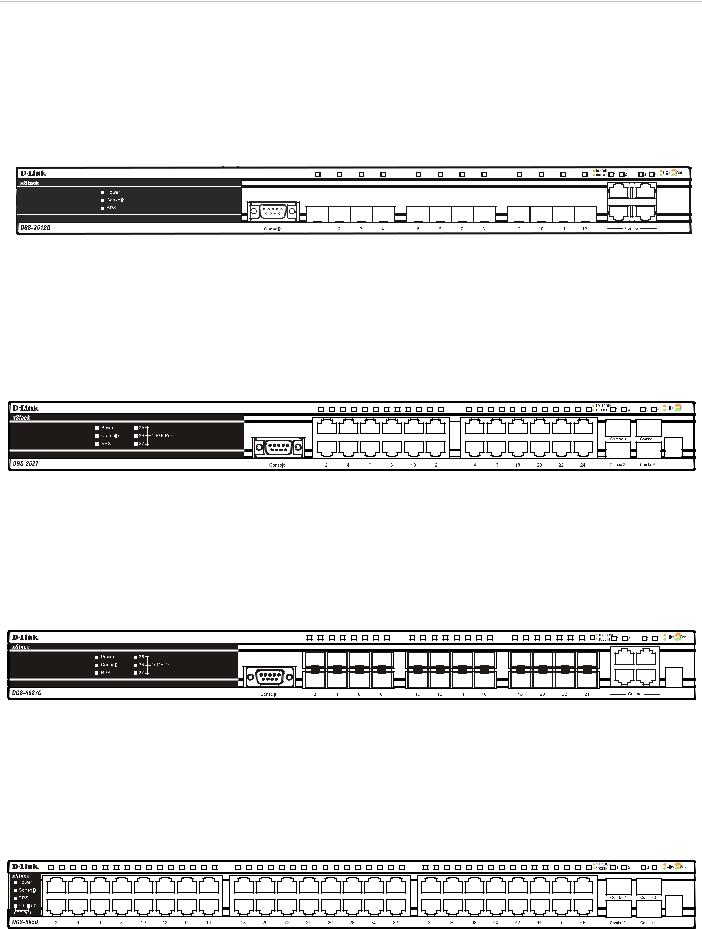
xStack DGS-3600 Series Layer 3 Gigabit Ethernet Managed Switch
Front-Panel Components
DGS-3612G
•Twelve SFP 100/1000Mbps ports
•Four Combo 1000BASE-T ports located to the right
•One female DCE RS -232 DB-9 console port
•LEDs for Power, Console, RPS, and Link/Act/Speed for each port
Figure 1- 1. Front Panel of the DGS-3612GG
DGS-3627
•Twenty-four 10/100/1000BASE-T ports
•Four Combo SFP ports located to the right
•One female DCE RS-232 DB-9 console port
•LEDs for Power, Console, RPS, Link/Act/Speed and 10GE for each port
•Stacking Module Numbered LED
Figure 1- 2. Front Panel of the DGS-3627
DGS-3627G
•Twenty-four SFP 1000Mbps ports
•Four Combo 1000BASE-T ports located to the right
•One female DCE RS -232 DB-9 console port
•LEDs for Power, Console, RPS, Link/Act/Speed and 10GE for each port
•Stacking Module Numbered LED
Figure 1- 3. Front Panel of the DGS-3627G
DGS-3650
•Forty-eight 10/100/1000BASE-T ports
•Four Combo SFP ports located to the right
•One female DCE RS -232 DB-9 console port
•LEDs for Power, Console, RPS, Link/Act/Speed and 10GE for each port
•Stacking Module Numbered LED
Figure 1- 4. Front Panel of the DGS-3650
2

xStack DGS-3600 Series Layer 3 Gigabit Ethernet Managed Switch
LEDs
The following table lists the LEDs located on models of the xStack DGS-3600 switch along with their corresponding description:
LED Indicator |
Color |
Status |
Description |
|
Power |
Green |
Solid |
Power On |
|
|
|
Dark |
Power Off |
|
Console |
Green |
Solid |
Console On |
|
|
|
Dark |
Console Off |
|
RPS |
Green |
Solid |
RPS in use |
|
|
|
Dark |
RPS not in use or not present |
|
Stacking LED (To |
Green |
Numbered 1-12 |
Box ID of the Switch in the switch stack. This field will |
|
be supported in |
|
|
read 1 for a switch in standalone mode. When the switch |
|
Release II) |
|
|
in question is a master of a switch stack, the number of |
|
|
|
|
the switch in the stack will be displayed, and the letter H |
|
|
|
|
will flash alternatively with this number. |
|
Port LEDs |
Green |
Solid |
Denotes an active connection at 1000Mbps. |
|
(10/100/1000Mbps |
|
Blinking |
Denotes data transfer at 1000Mbps. |
|
ports) |
|
|
|
|
Orange |
Solid |
Denotes an active connection at 10/100Mbps. |
||
|
||||
|
|
Blinking |
Denotes data transfer at 10/100Mbps. |
|
|
Dark |
No Light |
Link Down |
|
SFP Port LED |
Green |
Solid |
Denotes an active connection at 1000Mbps. |
|
|
|
Blinking |
Denotes data transfer at 1000Mbps. |
|
|
Dark |
No Light |
Link Down |
|
|
|
|
|
|
10GE Module |
Green |
Solid |
Denotes an active connection. |
|
LEDs (Located on |
|
Blinking |
Denotes data transfer. |
|
the front panel) |
|
|
|
|
Dark |
No Light |
Link Down |
||
|
||||
|
|
|
|
Figure 1- 5. DGS-3612G LEDs
Figure 1- 6. DGS-3627 LEDs
3

xStack DGS-3600 Series Layer 3 Gigabit Ethernet Managed Switch
Figure 1- 7. DGS-3627G LEDs
Figure 1- 8. DGS-3650 LEDs
Rear Panel Description
The rear panels of the DGS-3612G, DGS-3627, DGS-3627G and the DGS-3650 are described below.
DGS-3612G
The rear panel of the DGS-3612G contains an AC power connector, and an outlet for an optional external RPS.
Figure 1- 9. Rear panel view of the DGS-3612G
DGS-3627 and DGS-3627G
The rear panel of DGS-3627 and DGS-3627G contains an AC power connector, an outlet for an optional external RPS and three slots for additional 10GE optional modules.
Figure 1- 10. Rear panel view of the DGS-3627(G)
DGS-3650
The rear panel of DGS-3650 contains an AC power connector, an outlet for an optional external RPS, a DCE RS-232 console port and two slots for additional 10GE optional modules.
Figure 1- 11. Rear Panel view of DGS-3650
The rear panel includes an outlet for an optional external redundant power supply. When power fails, the optional external RPS will take over all the power immediately and automatically. The AC power connector is a standard three-pronged connector that supports the power cord. Plug-in the female connector of the provided power cord into this socket, and the male side of the cord into a power outlet. The Switch automatically adjusts its power setting to any supply voltage in the range from 100 ~ 240 VAC at 50 ~ 60 Hz.
4
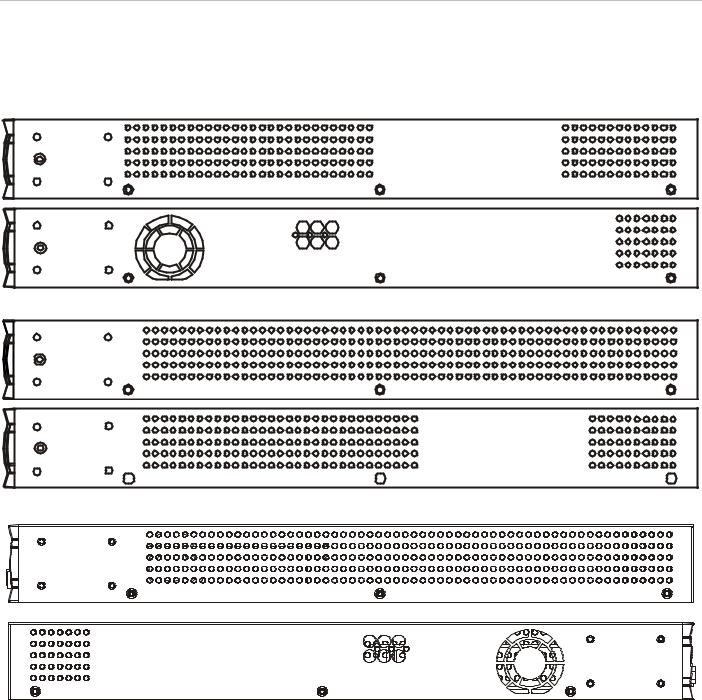
xStack DGS-3600 Series Layer 3 Gigabit Ethernet Managed Switch
Side Panel Description
The right-hand side panel of the Switch contains a system fan and ventilation along the entire right side. The left hand panel includes a system fan and a heat vent. The system fans are used to dissipate heat. Do not block these openings on either side of the Switch. Leave at least 6 inches of space at the rear and sides of the Switch for proper ventilation. Be reminded that without proper heat dissipation and air circulation, system components might overheat, which could lead to system failure.
Figure 1- 12. Side Panels of the DGS-3627 and the DGS-3627G
Figure 1- 13. Side Panels of the DGS-3650
Figure 1- 14. Side Panels of the DGS-3612G
5
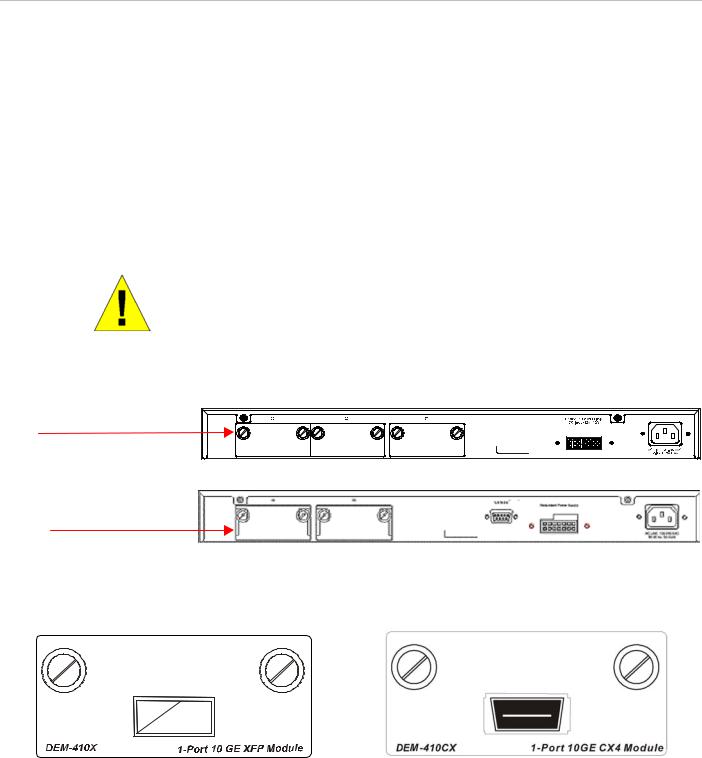
xStack DGS-3600 Series Layer 3 Gigabit Ethernet Managed Switch
10GE Uplink Modules
At the rear of the xStack DGS-3600 series switches reside optional module slots. This slot may be equipped with the DEM-410X single-port 10GE XFP uplink module, or a DEM-410CX single-port 10GE CX4 uplink module, both sold separately.
Adding the DEM-410X optional module will allow the administrator to add a single-port 10GE stacking module which will transmit information at a rate of ten gigabits a second. This port is compliant with standard IEEE 802.3ae, supports full-duplex transmissions only and is to be used with XFP MSA compliant transceivers.
The DEM-410CX will too transfer information at a rate of ten gigabits a second but is used as an uplink module to a network device. Compliant with the IEEE802.3ak standard, this module will use a 4-laned copper connector to transfer information in fullduplex mode, quickly and accurately. User beware, the cable and connector port used for this module is nearly identical to the stacking ports and cables used for stacking in the xStack Series, but can in no way be interchangeable.
To install these modules, follow the simple steps listed below.
CAUTION: Before adding the optional module, make sure to disconnect all power sources connected to the Switch. Failure to do so may result in an electrical shock, which may cause damage, not only to the individual but to the Switch as well.
At the back of the Switch to the left is the slot for the optional module, as shown in Figure 1-15 and Figure 1-16. This slot should be covered with a faceplate that can be easily removed by loosening the screws and pulling off the plate.
Optional Module Slots |
Figure 1- 15. Optional Module slots at the rear of the DGS-3627 (or DGS-3627G) |
Optional Module Slots |
Figure 1- 16. Optional Module slots at the rear of the DGS-3650
After removing the faceplate, remove the DEM-410X or DEM-410CX optional module from its box. The front panel should resemble the drawings represented here.
Figure 1- 17. Front Panel of the DEM-410X and the DEM-410CX
Take the module and gently slide it in to the available slot at the rear of the Switch until it reaches the back, as shown in the following figure. At the back of the slot are two sets of plugs that must be connected to the module. Gently, but firmly push in on the module to secure it to the Switch. The module should fit snugly into the corresponding receptors.
6

xStack DGS-3600 Series Layer 3 Gigabit Ethernet Managed Switch
Figure 1- 18. Inserting the optional modules into the Switch.
Now tighten the two screws at adjacent ends of the module into the available screw holes on the Switch. The upgraded DGS- 3627/DGS-3627G/DGS-3650 is now ready for use.
Figure 1- 19. DGS-3627 with optional module installed.
Installing the SFP ports
The xStack DGS-3600 Series switches are equipped with SFP (Small Form Factor Portable) ports, which are to be used with fiber-optical transceiver cabling in order to uplink various other networking devices for a gigabit link that may span great distances. These SFP ports support full-duplex transmissions, have auto-negotiation and can be used with the DEM-310GT (1000BASE-LX), DEM-311GT (1000BASE-SX), DEM-312GT2 (1000BASE-LX), DEM-314GT (1000BASE-LH), DEM-315GT (1000BASE-ZX), DEM-330T/R (WDM) and DEM-331T/R (WDM)transceivers. See the figure below for installing the SFP ports in the Switch.
Figure 1- 20. Inserting the fiber-optic transceivers into the DGS-3600 series switch
7

xStack DGS-3600 Series Layer 3 Gigabit Ethernet Managed Switch
SECTION 2
Installation
Package Contents
Before You Connect to the Network
Installing the Switch without the Rack
Rack Installation
Power On
RPS Installation
Package Contents
Open the shipping carton of the Switch and carefully unpack its contents. The carton should contain the following items:
•One Stand-alone Switch
•One AC power cord
•This Manual on CD
•Mounting kit (two brackets and screws)
•Four rubber feet with adhesive backing
•DCE RS-232 console cable
If any item is missing or damaged, please contact your local D-Link Reseller for replacement.
Before You Connect to the Network
The site where you install the Switch may greatly affect its performance. Please follow these guidelines for setting up the Switch.
•Install the Switch on a sturdy, level surface that can support at least 4.24kg (9.35lbs) of weight for the DGS- 3612G/DGS-3627/DGS-3627G, or 6.02kg (13.27lbs) for DGS-3650. Do not place heavy objects on the Switch.
•The power outlet should be within 1.82 meters (6 feet) of the Switch.
•Visually inspect the power cord and see that it is fully secured to the AC/DC power port.
•Make sure that there is proper heat dissipation from and adequate ventilation around the Switch. Leave at least 10 cm (4 inches) of space at the front and rear of the Switch for ventilation.
•Install the Switch in a fairly cool and dry place for the acceptable temperature and humidity operating ranges.
•Install the Switch in a site free from strong electromagnetic field generators (such as motors), vibration, dust, and direct exposure to sunlight.
•When installing the Switch on a level surface, attach the rubber feet to the bottom of the device. The rubber feet cushion the Switch, protect the casing from scratches and prevent it from scratching other surfaces.
8

xStack DGS-3600 Series Layer 3 Gigabit Ethernet Managed Switch
Installing the Switch without the Rack
When installing the Switch on a desktop or shelf, the rubber feet included with the Switch should first be attached. Attach these cushioning feet on the bottom at each corner of the device. Allow enough ventilation space between the Switch and any other objects in the vicinity.
Figure 2 - 1. Prepare Switch for installation on a desktop or shelf
Installing the Switch in a Rack
The Switch can be mounted in a standard 19" rack. Use the following diagrams to guide you.
Figure 2 - 2. Fasten mounting brackets to Switch
Fasten the mounting brackets to the Switch using the screws provided. With the brackets attached securely, users can mount the Switch in a standard rack as shown in Figure 2-3 below.
9
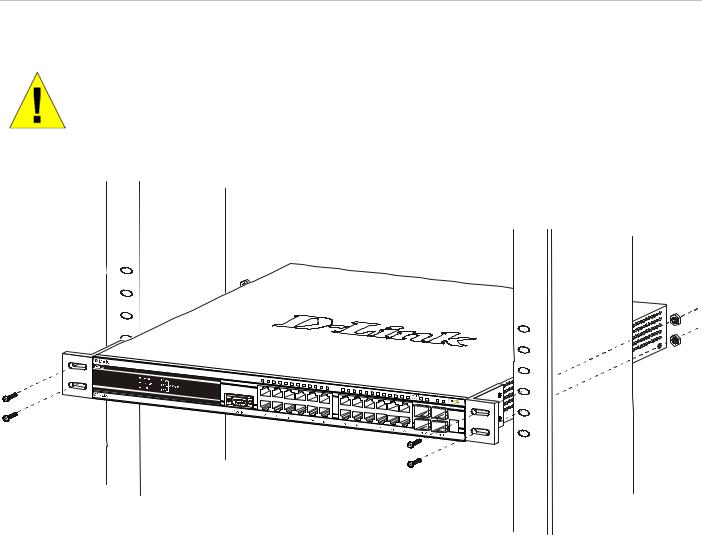
xStack DGS-3600 Series Layer 3 Gigabit Ethernet Managed Switch
Mounting the Switch in a Standard 19" Rack
CAUTION: Installing systems in a rack without the front and side stabilizers installed could cause the rack to tip over, potentially resulting in bodily injury under certain circumstances. Therefore, always install the stabilizers before installing components in the rack. After installing components in a rack, do not pull more than one component out of the rack on its slide assemblies at one time. The weight of more than one extended component could cause the rack to tip over and may result in injury.
Figure 2 - 3. Installing Switch in a rack
Power on AC Power
Plug one end of the AC power cord into the power connector of the Switch and the other end into the local power source outlet.
After the Switch is powered on, the LED indicators will momentarily blink. This blinking of the LED indicators represents a reset of the system.
Power Failure
For AC power supply units, as a precaution, in the event of a power failure, unplug the Switch. When power has resumed, plug the Switch back in.
10
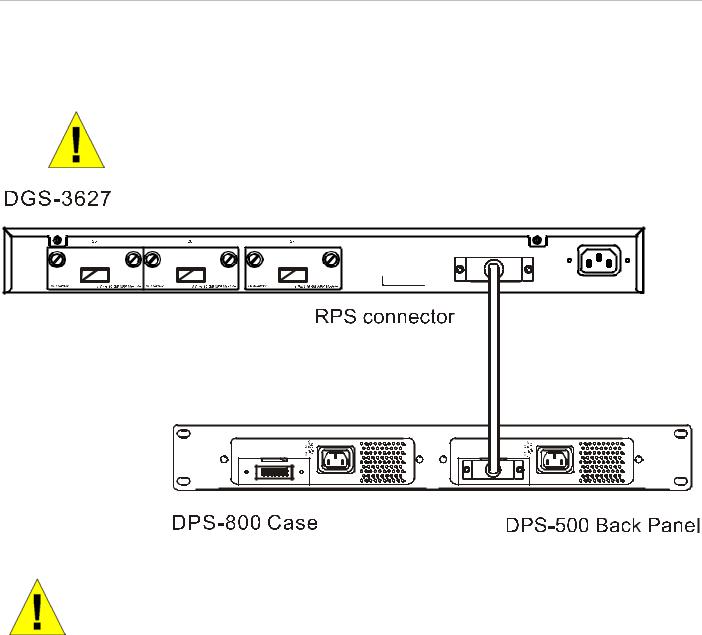
xStack DGS-3600 Series Layer 3 Gigabit Ethernet Managed Switch
RPS Installation
Follow the instructions below to connect an RPS power supply to the Switch (DPS-500). The DPS-500 is a redundant powersupply unit designed to conform to the voltage requirements of the switches being supported. DPS-500 can be installed into the DPS-900, or DPS-800.
CAUTION: The AC power cord for the Switch should be disconnected before proceeding with installation of the DPS-500.
Figure 2 - 4. Installing the DPS-500
CAUTION: Installing systems in a rack without the front and side stabilizers installed could cause the rack to tip over, potentially resulting in bodily injury under certain circumstances. Therefore, always install the stabilizers before installing components in the rack. After installing components in a rack, do not pull more than one component out of the rack on its slide assemblies at one time. The weight of more than one extended component could cause the rack to tip over and may result in injury.
11

xStack DGS-3600 Series Layer 3 Gigabit Ethernet Managed Switch
Connect to RPS
The DPS-200 is connected to the Master Switch using a 14-pin DC power cable. A standard, three-pronged AC power cable connects the redundant power supply to the main power source.
Figure 2 - 5. The DGS-3627 with the DPS-500 chassis RPS
1.Insert one end of the 14-pin DC power cable into the receptacle on the switch and the other end into the redundant power supply.
2.Using a standard AC power cable, connect the redundant power supply to the main AC power source. A green LED on the front of the DPS-500 will glow to indicate a successful connection.
3.Re-connect the switch to the AC power source. A LED indicator will show that a redundant power supply is now in operation.
4.No change in switch configuration is necessary for this installation.
NOTE: See the DPS-500 documentation for more information.
CAUTION: Do not use the Switch with any redundant power system other than the DPS-500.
12

xStack DGS-3600 Series Layer 3 Gigabit Ethernet Managed Switch
Section 3
Connecting the Switch
Switch to End Node
Switch to Hub or Switch
Connecting to Network Backbone or Server
NOTE: All 10/100/1000Mbps NWay Ethernet ports can support both MDI-
II and MDI-X connections.
Switch to End Node
End nodes include PCs outfitted with a 10, 100 or 1000 Mbps RJ 45 Ethernet/Fast Ethernet Network Interface Card (NIC) and most routers. An end node can be connected to the Switch via a twisted-pair Category 3, 4, or 5 UTP/STP cable. The end node should be connected to any of the ports of the Switch.
Figure 3- 1. Switch connected to an end node
The Link/Act LEDs for each UTP port will light green or amber when the link is valid. A blinking LED indicates packet activity on that port.
13
